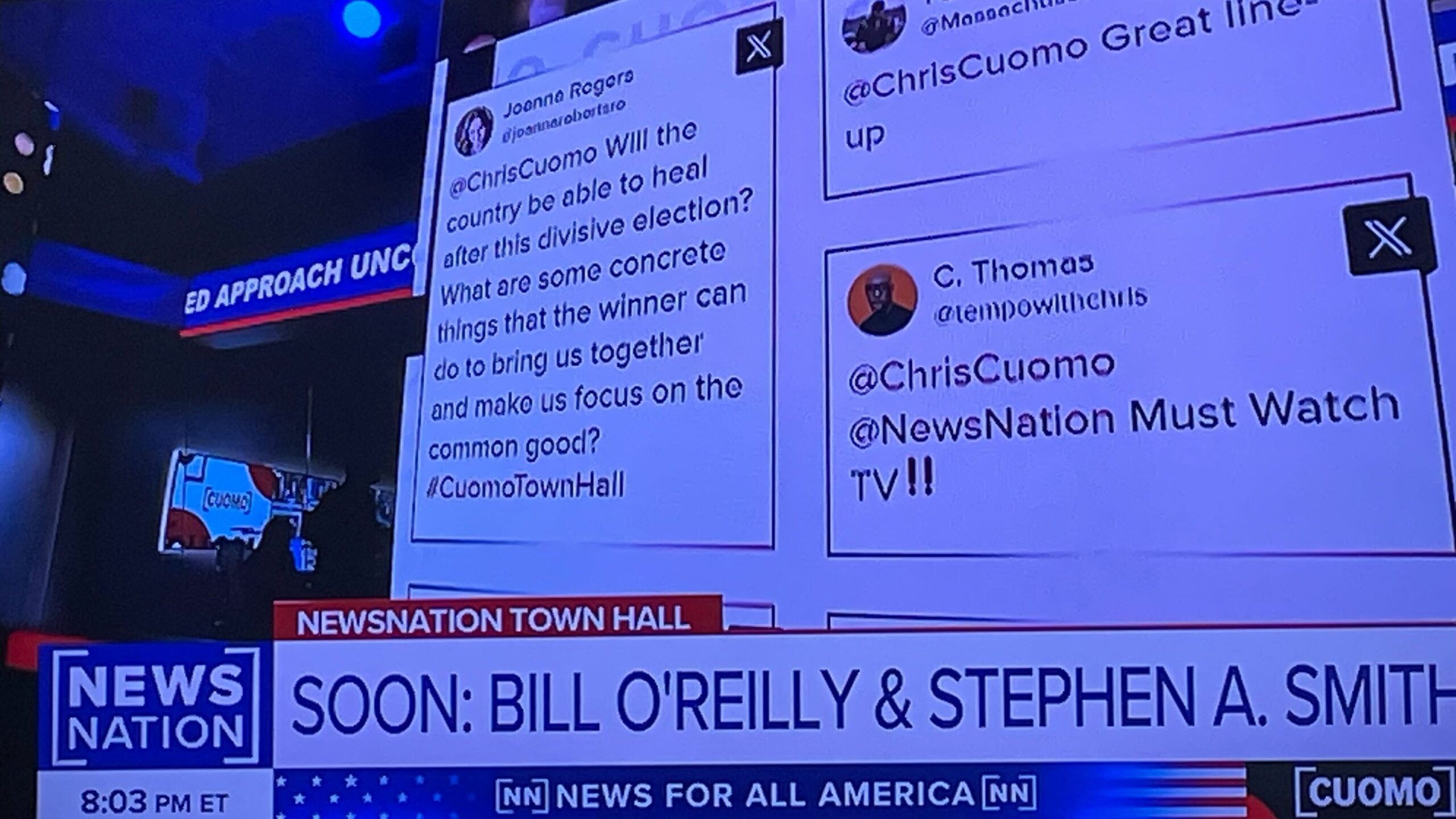On the biggest night in news, all eyes were on TVs, tablets, and phones as stations delivered around-the-clock coverage of the 2024 U.S. Election. Election night coverage is often framed with memorable slogans, ranging from “America Decides” to “Your Voice, Your Vote.” With so many viewing options, stations that stood out from the competition leaned heavily into these overarching themes by leveraging interactive production technology, allowing their audiences to engage with the coverage in real time, beyond just voting results. From Seattle, Washington, to San Juan, Puerto Rico, there were outstanding examples of live polling, user-generated content, QR codes, and other engaging displays. In this post, we’ll explore those interactive broadcasts and the stations that redefined traditional election coverage, making it more dynamic and engaging.
Viewer Voice Through Interactive Polls
As stations awaited the early polling results, many began their coverage by asking audiences if they participated in this election cycle. Univision’s local stations in Chicago and Houston offered standout examples, featuring segments that visualized voter turnout while emphasizing the significance of this year’s election. This instant feedback provided a dynamic touchpoint throughout the night, offering valuable insights into broader trends and shaping the narrative as results unfolded.
Other national and local outlets used real-time polls to gauge voter sentiment, both before and after polls closed, including flash polls that displayed viewers’ opinions on pivotal moments throughout the night.
Breaking News Content Curation from Social
Social media platforms—ranging from X (formerly Twitter) to Instagram, Facebook, and TikTok—continue to serve as invaluable tools for media companies to share breaking news. While stations must carefully vet the posts they use, prioritizing content from verified accounts, they sourced real-time updates from candidates sharing live messages with their constituents, county offices posting official results, and reporters on-site at watch party events. On a night when information flows minute-to-minute and production teams are racing to update results graphics, these social posts offer an efficient way to deliver the latest updates to viewers without overloading the production team.
Telemundo Puerto Rico, NewsNation, and LiveNow from FOX, made excellent use of their massive in-studio screens, creating a visually compelling storytelling experience for viewers at home. They displayed a cascading “waterfall” of content and then spotlighted specific posts for deeper discussion. Similarly, C-SPAN showcased a seamless blend of real-time voting results within an L-bar layout, paired with breaking news updates from reporters to keep viewers informed as events unfolded. On a night when every second counts, both stations demonstrated the power of interactive technology to match the speed and demands of the news cycle.
User Generated Content to Celebrate Civic Engagement
Beyond using social media for news gathering, many stations took a more direct approach by encouraging viewers to join the conversation and share their voting experiences. Whether through snapshots of their “I Voted” stickers or photos celebrating their participation, stations invited audiences to contribute by submitting images directly or posting on social media with designated hashtags. This interactive strategy fostered a sense of unity and civic pride nationwide, making election night coverage more personal and dynamic. By filling screens with real-time glimpses of the people behind the numbers, outlets reinforced the message that voting is both a shared responsibility and a celebration.
QR Codes & Countdown to Further Engagement
In addition to engaging audiences through polling and user-generated content, stations like CBS Texas leveraged QR codes to seamlessly direct their linear viewers to extended coverage and in-depth analysis on their digital platforms. Since their audience is engaging on every device this is a great example of guiding them to the station’s apps & sites. It is multi-platform storytelling at its finest.
To wrap up, let’s highlight one more interactive element that was widely used across stations: the countdown graphic. Election Day is packed with critical deadlines, from local poll closures to the staggered closing times across different time zones nationwide. In such an information-heavy environment, with constant updates throughout the day, countdown graphics provide viewers with key information in a simple, digestible format. This tool effectively helps audiences stay informed without feeling overwhelmed, serving as a perfect example of how to deliver clarity amid the chaos.
Election night 2024 showcased how broadcasters are redefining traditional coverage with innovative, audience-focused tools. By fostering participation through user-generated content and leveraging visuals like massive studio screens and heat maps, broadcasters turned viewers into active participants throughout their coverage. Beyond their impact on a high-profile event like election night, the real value of these interactive moments lies in their efficiency and repeatability. Whether it’s visualizing audience input, showcasing user-generated content, or delivering real-time updates, these technologies can seamlessly enhance nightly coverage, making everyday broadcasts more dynamic and interactive—not just the big tentpole moments.








